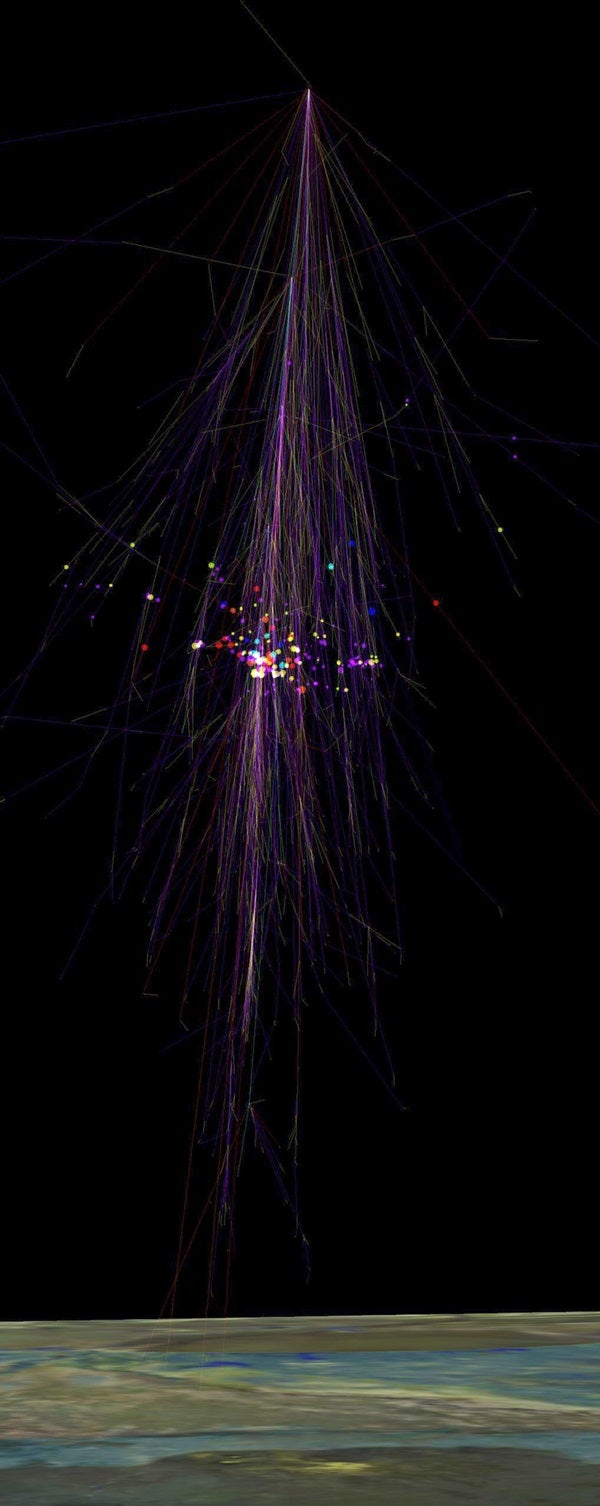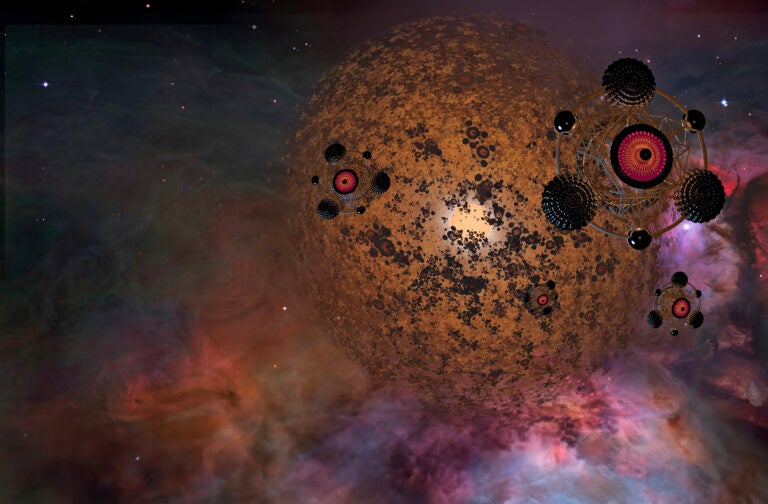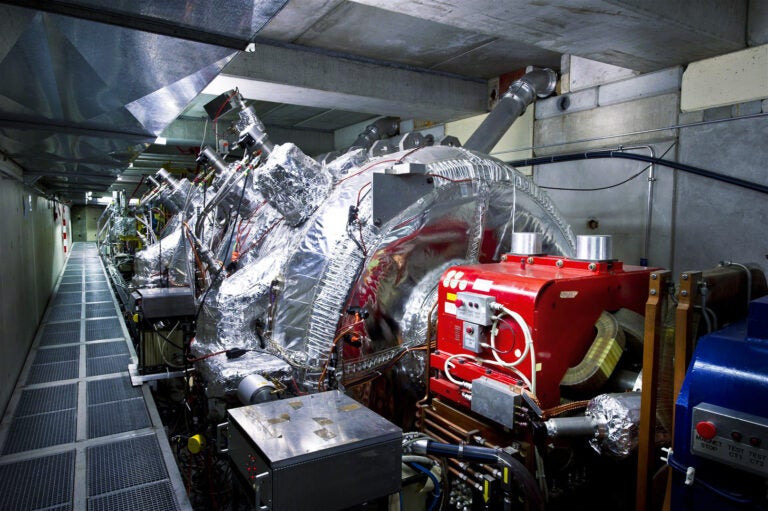Scientists first realized that cosmic rays exist in 1912. The story of discovery is actually pretty crazy: Austrian-American physicist Victor Hess flew aboard a hot-air balloon to higher than 3 miles (5km) above sea level. There, he measured three times as much radiation as on the ground, and thus determined that some type of cosmic radiation, or cosmic rays for short, bombards Earth from all directions. Hess later won the Nobel Prize in physics for his work.
What can produce these particles? That’s a very good question. Scientists can’t just trace the path of a cosmic ray back to its source. These things have electric charges, and the Milky Way Galaxy has a magnetic field — as does the Sun, Earth, and a whole host of other celestial objects. When charged particles move through magnetic fields, their paths are altered.
Scientists know that about 90 percent of cosmic rays are high-energy protons, while the other 10 percent are electrons, gamma rays — which are the highest energy form of light — and the nuclei of atoms heavier than hydrogen. As they slam into molecules in Earth’s atmosphere, they produce other, lower-energy, so-called secondary particles that rain down on our planet’s surface.
Cosmic rays cover a wide range of energies. Astrophysicists use the unit “electron volt,” or eV, to describe the energies of particles. Visible-light photons, for example, have energies of 2 to 3 eV. Cosmic rays have energies anywhere from a billion eV up to a sextillion eV — that’s a one followed by 21 zeros.
Astronomers have no idea what produces the ultra-high-energy cosmic rays, but large-scale detectors on the ground are looking for the secondary particles and other effects that these cosmic rays create. By analyzing the produced particles and gamma rays, astronomers can learn the energies and other properties of the original particles. Cosmic rays also create a type of blue light called “Cerenkov radiation.” The particles are moving extremely fast, and once they enter Earth’s atmosphere, they actually travel faster than light does in that medium and emit a cone of light. This effect is often compared to a sonic boom from a fast-moving jet.
The Pierre Auger Observatory in Argentina and the Telescope Array Project in Utah are on the hunt for signs of these ultra-high-energy cosmic rays. The future Cherenkov Telescope Array will also search for these particles from two sites still to be determined.
Meanwhile, astronomers have pinned down the sources of lower-energy cosmic rays, those that are billions of electron volts. They long suspected supernova remnants, the leftover debris of once-massive stars, to be the culprit. Sure enough, detections a few years ago of gamma rays from two supernova remnants match the energies expected if a cosmic ray decayed into two gamma rays. The shock front of a supernova remnant has entangled magnetic fields, which trap charged particles. Those particles track back-and-forth across the shock, gaining a small amount of energy at each pass. Eventually — some thousands of years later — those particles will have gained a huge amount of energy and can escape to travel across the galaxy as cosmic rays.
Expand your knowledge at Astronomy.com
Check out the complete Astronomy 101 series
Learn about our stellar neighborhood with the Tour the Solar System series
Read about the latest astronomy news










